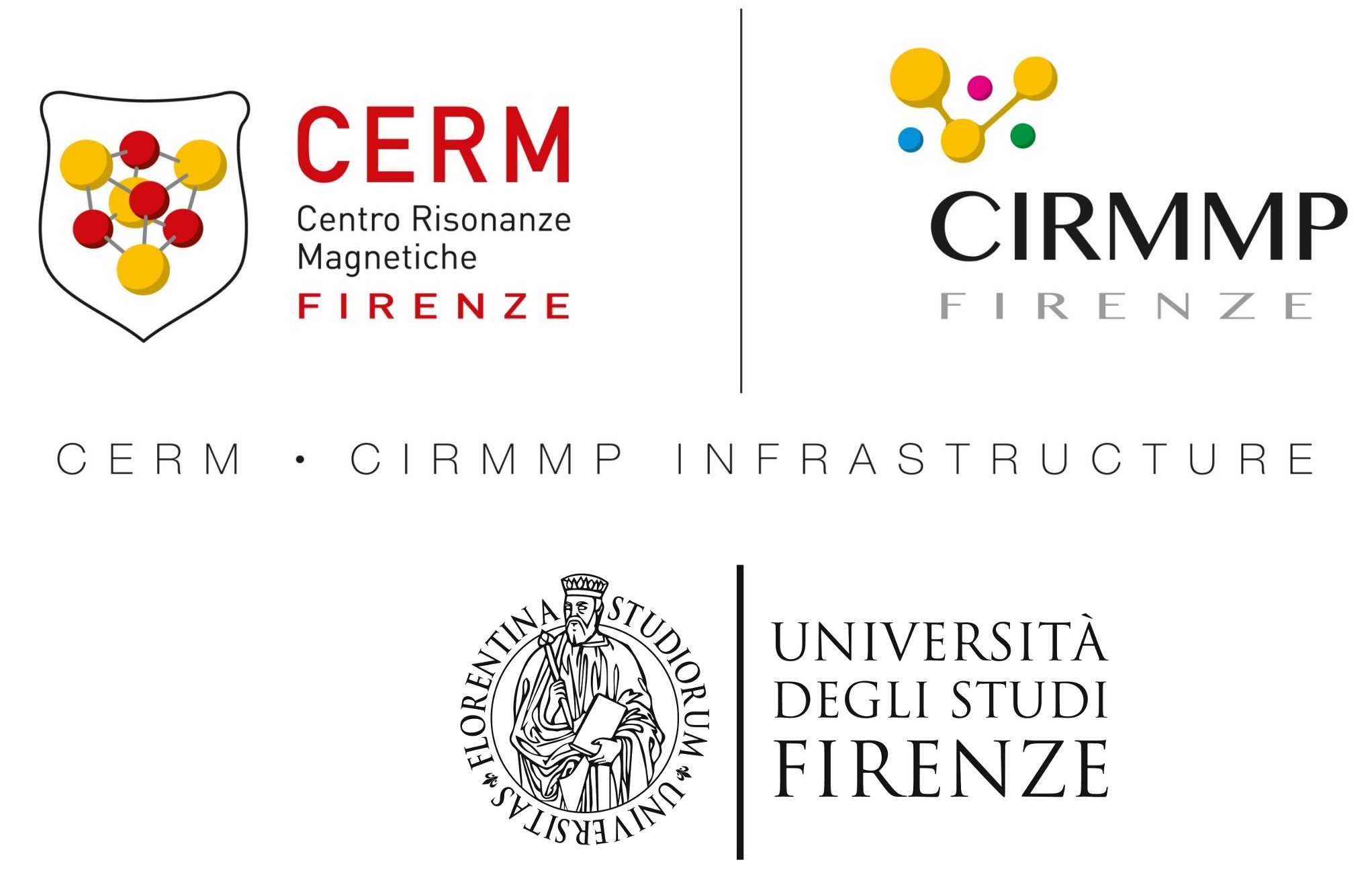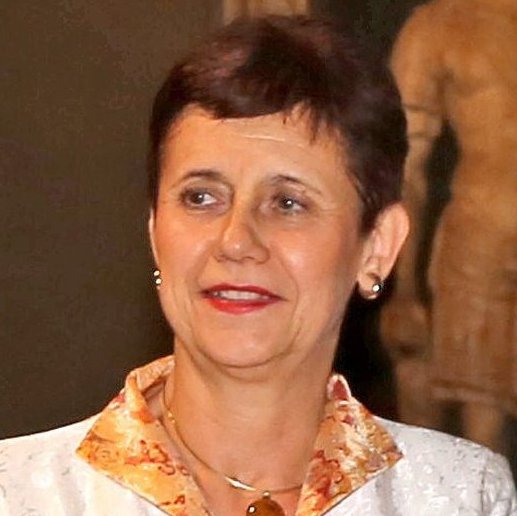

Core Center for NMR: Experts in solution and solid-state NMR for the functional characterisation of biomolecules.
The Magnetic Resonance Center (CERM) of the University of Florence together with the Interuniversity Consortium CIRMMP, constitute an infrastructure for Life Sciences, which provides a unique environment for research in the field of Structural Biology. The infrastructure is specialised in structural biology, NMR methodology, protein/complex structure determination, molecular biology, functional characterisation, drug discovery, structure-based vaccine design, bioinformatics, relaxometry and metabolomics.
The Centre has a wide range of high-resolution NMR spectrometers, for solution and solid-state applications, ranging from 400 MHz to 1200 MHz.
Most of the thirteen NMR spectrometers available at Instruct IT are equipped with cryo-probes either for 1H, 13C, 15N, 19F or 31P direct-detection; moreover, each spectrometer is equipped with a range of accessories that make it possible to meet the wider variety of user requirements.
On the low field end, it offers unique instruments for the measurement of nuclear relaxation at various magnetic fields with a Fast Field Cycling Relaxometer. A broad range of tools for biomolecules’ biophysical characterisation includes: EPR spectrometer, multi-angle DLS, ITC, optical microscope, flow cytometer, SEC-MALS, SPR device, CD device, fluorimetry, stopped-flow spectrophotometer.
Molecular biology and wet lab facilities are available for sample preparation. Furthermore, integrated databases, software and web-based tools for genome browsing, macromolecular structure calculation based on NMR data with/without the inclusion of paramagnetic constraints, analysis of metal-binding sites and metalloproteins are available.
For over 30 years, the CERM/CIRMMP NMR infrastructure has provided access to European users. Dedicated technical staff and researcher’ expertise facilitates the exploitation of magnetic resonance approaches also by those users not familiar with these technologies.
In more recent years the infrastructure has provided expertise and a mean of over 260 days per year of transnational access through a number of European projects, e.g. Bio-NMR, coordinated by CIRMMP, iNEXT and iNEXT-Discovery.
CERM/CIRMMP is currently available for remote access, as well as physical visits by national and international scientists. For information on the availability of specific technologies, view the Technology Availability List or contact support@instruct-eric.org. Please check here regularly for updates.
How to find us
The CERM building is located on Polo Scientifico campus in Sesto Fiorentino, a small town close to Florence airport. The site can be easily reached by car or bus. For details, look at the following link. The site entrance of CERM is located in Via Luigi Sacconi 6.
CERM/CIRMMP provides state of the art instrumentation and expertise to perform the most comprehensive array of experiments needed for the structure and dynamic characterisation of biological macromolecules and their complexes. All the standard pulse sequences for spectroscopic, structural and dynamical characterisation are available for attaining fundamental atomic level information such as chemical shift assignment, 15N relaxation measurements, structure elucidation and protein-ligand interactions. CERM/CIRMMP has developed 13C direct detection protocols for “protonless” NMR experiments and for in-cell NMR spectroscopy, and tailored pulse sequences for structural determination of paramagnetic systems as well as for the study of Intrinsically Disordered Proteins and Regions (IDPs and IDRs).
View All Magnetic Resonance Techniques at Instruct
View All Solution NMR at Instruct
Electron Paramagnetic Resonance (EPR)-based methods have been used to map local dynamic and structural features of biomolecules, to explore different modes of biomolecule-ligand interaction, to obtain long-range structural restraints and to probe metal-ion-binding sites.
The Center of Magnetic Resonance (CERM) facility includes two EPR instruments (Continuous-wave X-Band and Continuous-wave/Pulse Q-Band), the necessary sample preparation wet lab (including glove-box) and the necessary processing computer. EPR measurements can be performed on biological samples containing paramagnetic metal ions (i.e. Fe, Cu, Mn etc.) or on samples opportunely labelled with paramagnetic tags (i.e. spin labels). The pulse Q-band EPR instrumentation present at CERM permit to measure DEER, HYSCORE and ESEEM experiments.
The CERM/CIRMMP platform provides instruments and services leading to the biophysical characterisation of biomolecules and the sample quality control using Dynamic Multi Angle Light Scattering (MALS-QELS) and circular dichroism (CD).
The isotope labelling platform at CERM/CIRMMP is devoted to the large scale production of proteins uniformly enriched in stable isotopes (15N, 13C and 2H) for biomolecular NMR spectroscopy studies. The platform is offering protein expression in bacterial cultures grown on chemically defined minimal media, as well as advanced protein purification approaches with the unique possibility of running them in anaerobicity. Users have access to the facility for large scale expression of labelled proteins in E. coli, under the supervision of a qualified platform engineer. Dedicated bench, optimised protocols and adequate isotopically labelled materials are available to users.
The mammalian expression for in-cell NMR platform at CERM/CIRMMP is devoted to the to the production of mammalian cell samples overexpressing the protein of interest for its characterization by in-cell NMR. It relies on transient transfection in HEK293T adherent cells. The gene of interest is cloned in a vector optimized for high constitutive cytoplasmic expression. Small scale transfections are performed to determine the expression level and to assess the feasibility of in-cell NMR. Cell samples for NMR are produced in T75 flasks. Different protein labelling strategies are possible, e.g. U-15N labelling; amino acid type-selective 13C,15N labelling. Co-expression of two or more proteins is possible. In-cell NMR experiments are required to be performed at the Solution NMR Facility at CERM.
Relaxometry is a technique that has been developed to obtain structural and dynamical information on nuclear spin systems. In the presence of a paramagnetic metal ion in the compound under investigation, relaxometry may provide information on the coordination of the nuclear spin with respect to the paramagnetic metal and, indirectly, information on the electron spin system. In fact, if the water proton exchange rate is fast or of the same order as the NMR timescale, the magnetic properties of the paramagnetic center are carried over from the water in bound position to the bulk.
CERM/CIRMMP (Consorzio Interuniversitario Risonanze Magnetiche di Metallo Proteine) offers unique research capabilities in the field of solid-state NMR of biomolecules by providing state of the art instrumentation and expertise to perform, at the highest level, the most comprehensive array of experiments needed for the structure and dynamic characterisation of biological macromolecules and their complexes.
Solid-state NMR available at CERM/CIRMMP is typically applied for the determination of fibril structures and to obtain atomic-level structural information of biomolecules when they are bound to or trapped in solid matrices that lack long-range three-dimensional order. Detailed structural studies can be accomplished by exploiting the effects induced by the presence of paramagnetic metal ions. CERM/CIRMMP has a long tradition in the determination of paramagnetic effects in the solid state to access structural information.

